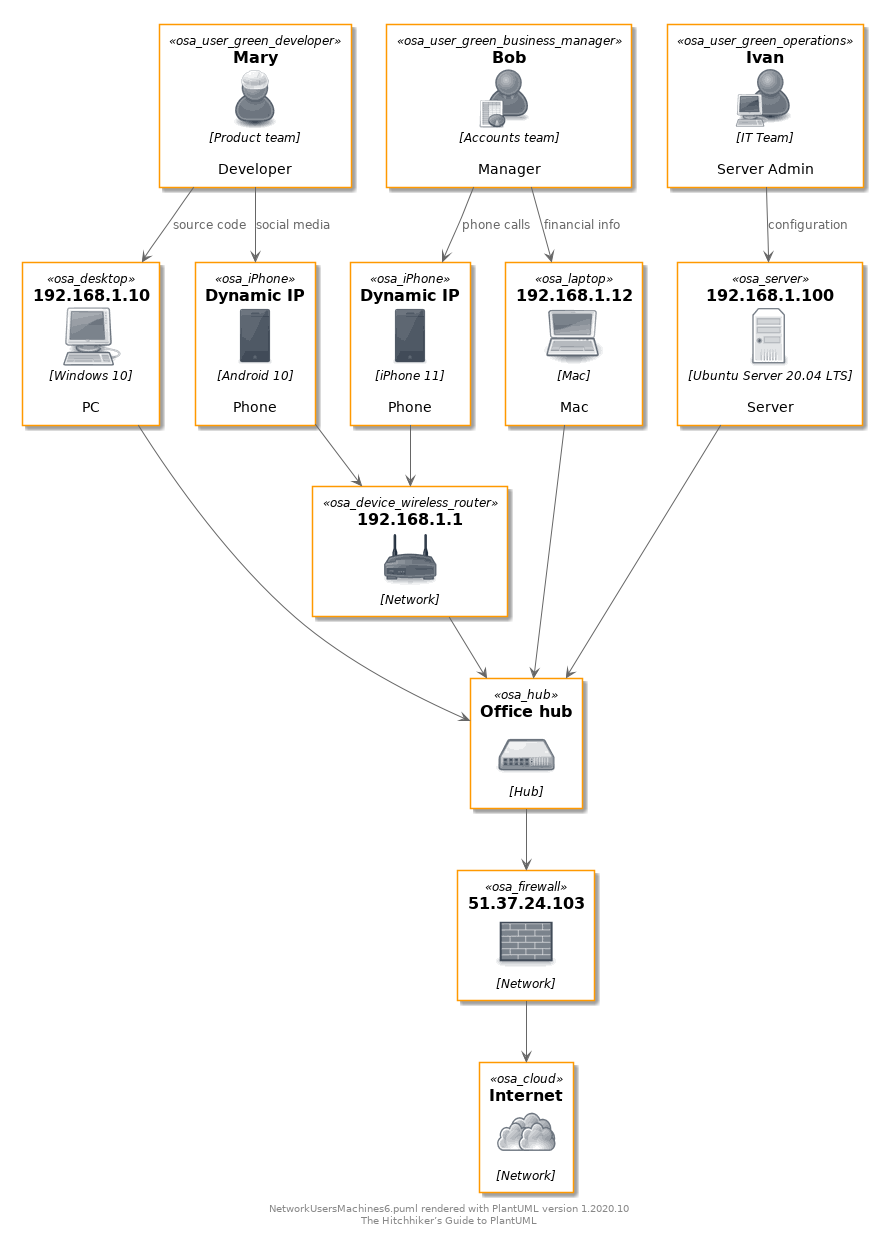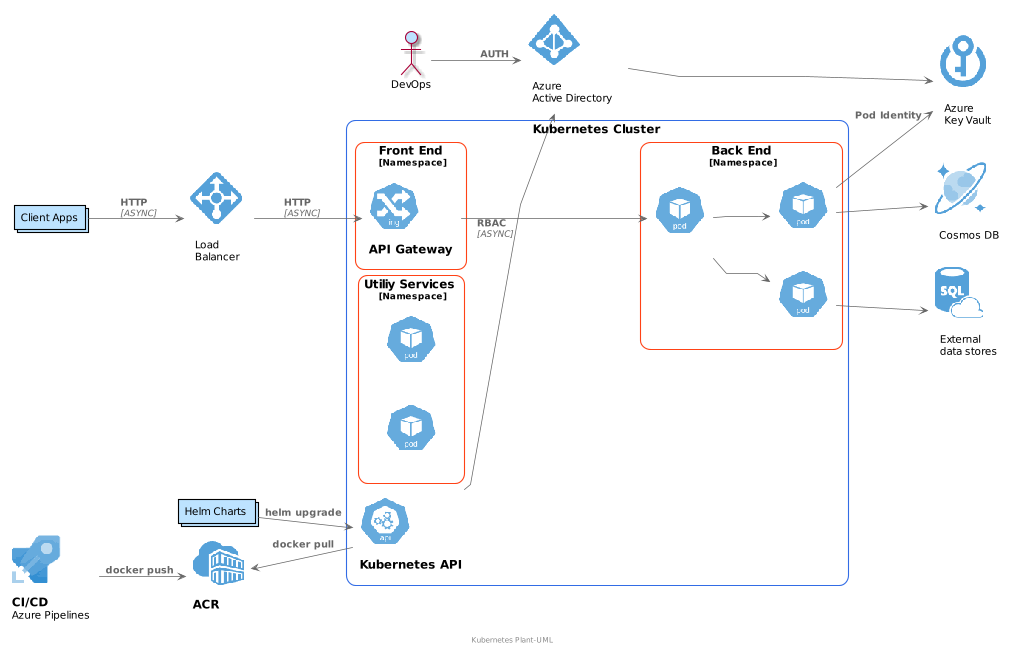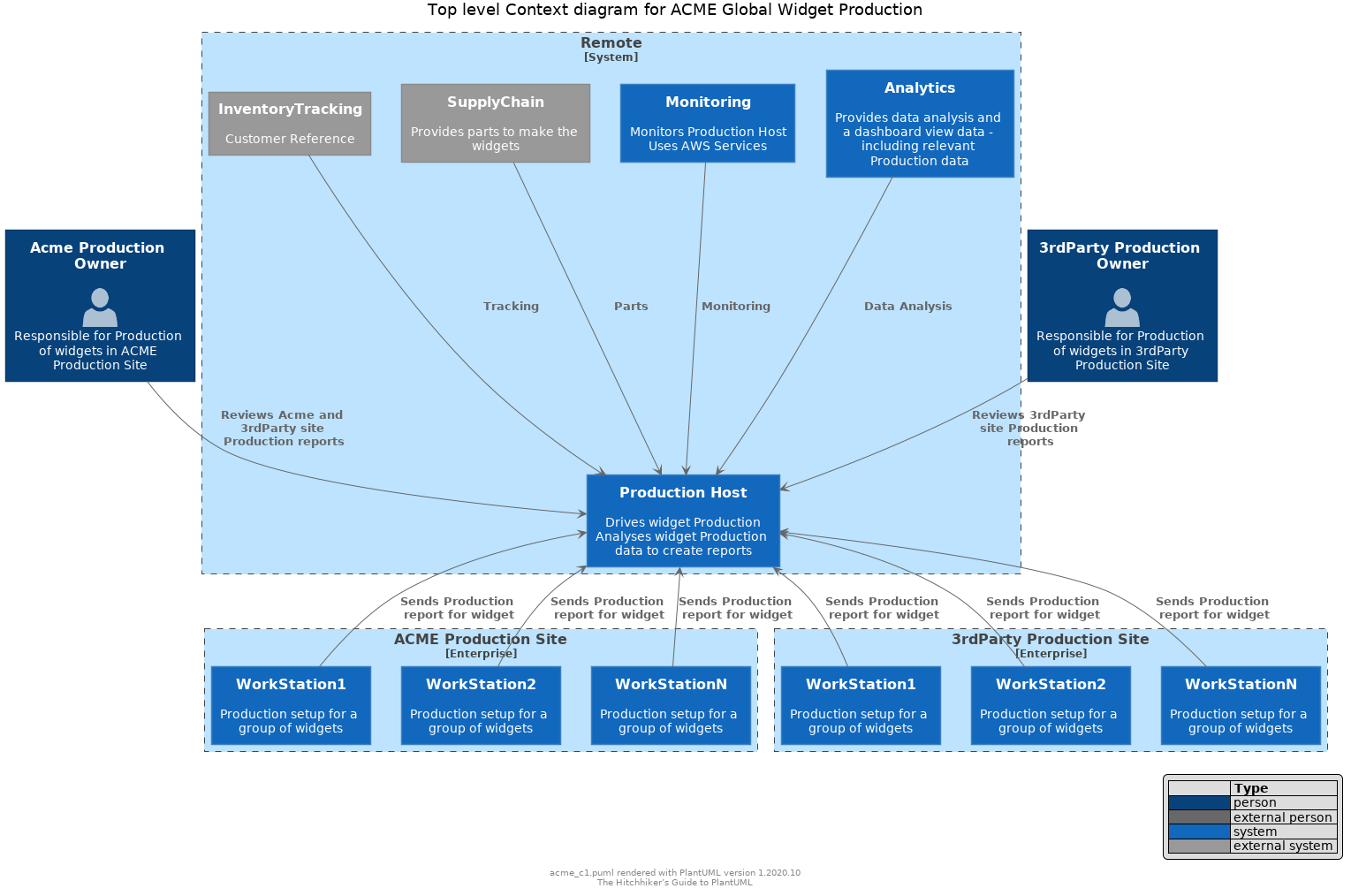Welcome to The Hitchhiker’s Guide to PlantUML!¶

Where system diagrams meet system reality¶
Imagine¶
Tip
Imagine being able to
share a model or diagram between all members of the team that they can all understand and contribute to and edit
draw diagrams like below automatically from a text description.
describe a system before you build it, when you’re building it, and as you maintain it into the future - keeping the description and the system current, and in sync.
maintain that text version in a source code repository beside the code for the system it is describing
Imagine having a diagramming tool that
fits with a developer workflow, and developers are comfortable using
enables lightweight just-enough AgileModeling in a way that meets AgileModelingBP
fits with modern practices of Continuous Integration Continuous Delivery - and “everything as code” including diagrams.
Well that’s what PlantUML gives you, and more…
PlantUML Diagram Examples¶
This guide walks through creating PlantUML diagrams, including the ones shown here.
Diagram of a Typical Network |
|
This uses the Plantuml Stdlib Open Security Architecture icon set. See Create a Diagram of a Typical Network |
Diagram of an AWS Architecture |
|
This uses the AWSlib icon set. See Create Real Life AWS Diagrams |
Diagram of a Kubernetes Architecture |
|
This uses the Azure and Kubernetes icon sets. See kubernetes |
Diagram of a Global Widget Production System Using C4 |
|
This uses the C4 Lightweight Software Architecture Description Method. See Using C4 To Architect ACME Global Widget Production |
Introduction
Using Standard Library
- 1. Create a Diagram of a Typical Network
- 1.1. Example Network Diagram
- 1.2. Select an icon library
- 1.3. View all the icons with listsprites
- 1.4. Gather the icons we need
- 1.5. Decorate the Icons
- 1.6. Create the diagram by connecting things together
- 1.7. Change the Layout to Vertical
- 1.8. Change the Layout by grouping icons together
- 1.9. Add a Legend Table and a Note
- 1.10. Conclusion
- 2. Create Real Life AWS Diagrams
- 3. Kubernetes and Azure
- 4. Google Cloud Platform
- 5. Using C4 To Architect ACME Global Widget Production
PlantUML Features
Understanding Standard Library
Standardising Standard Library
Future
Annex Standard Library C4




